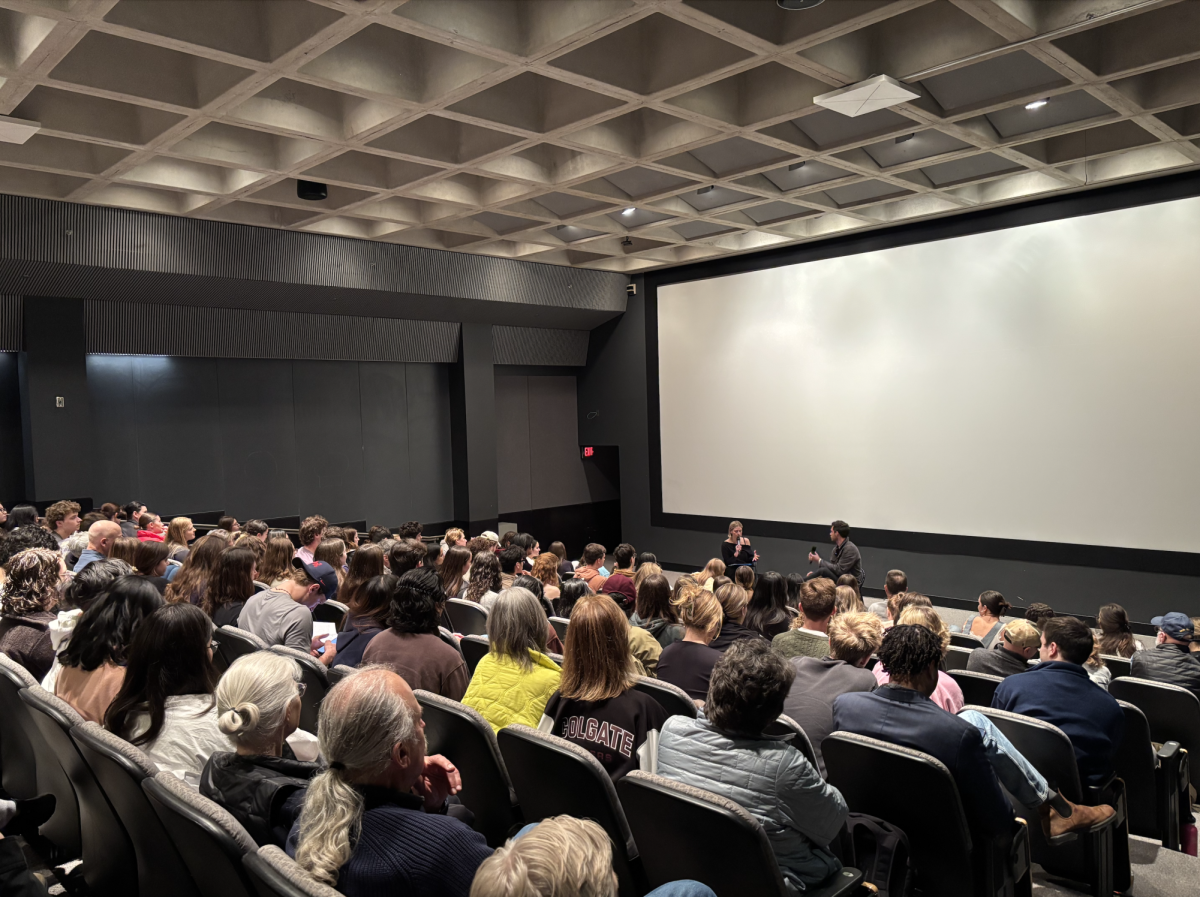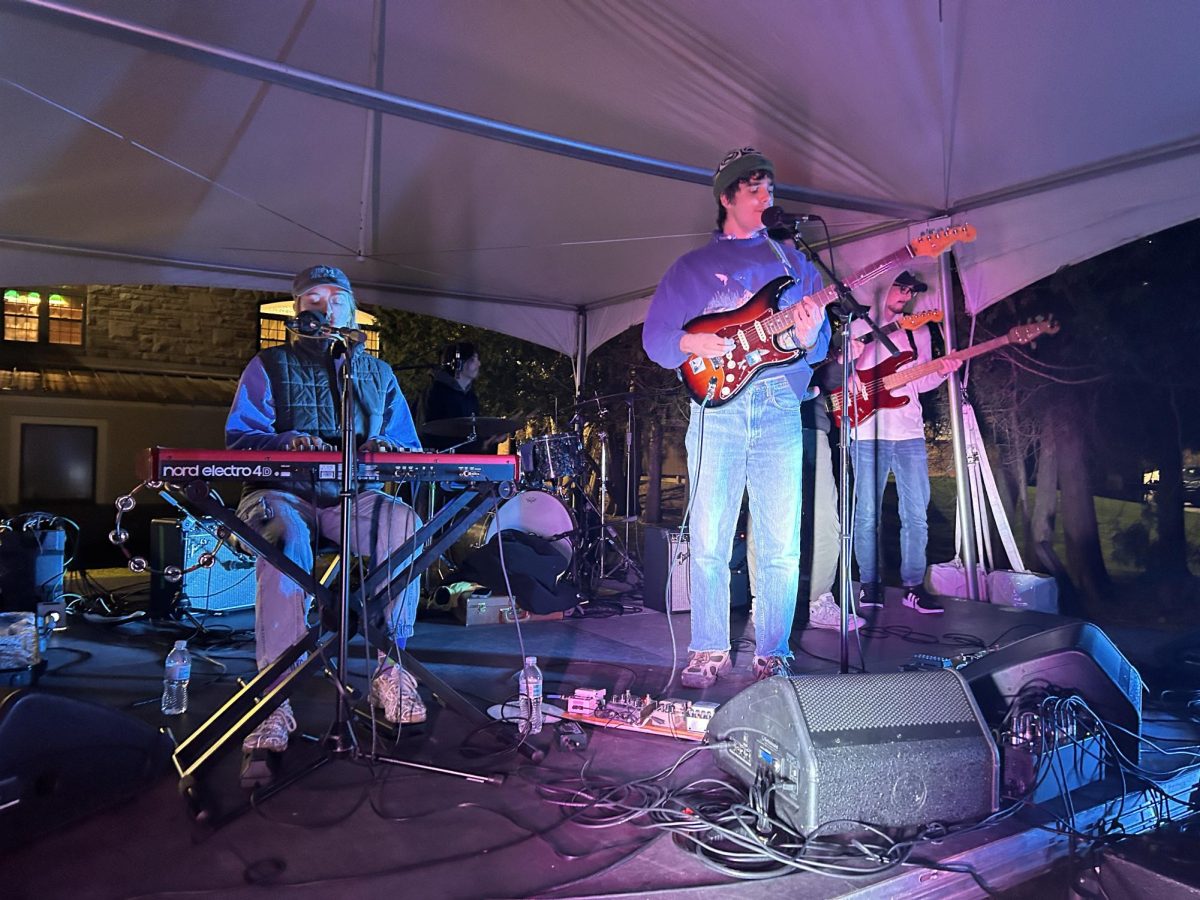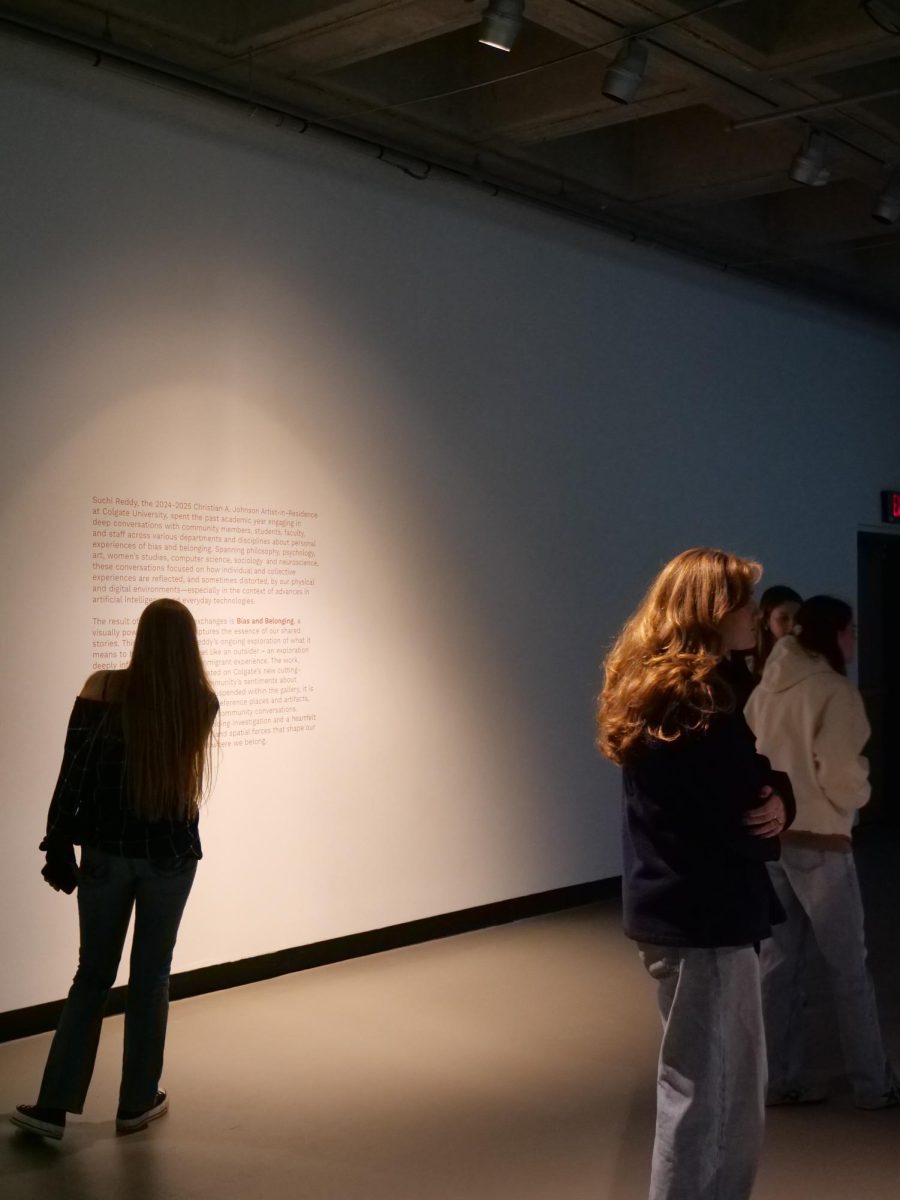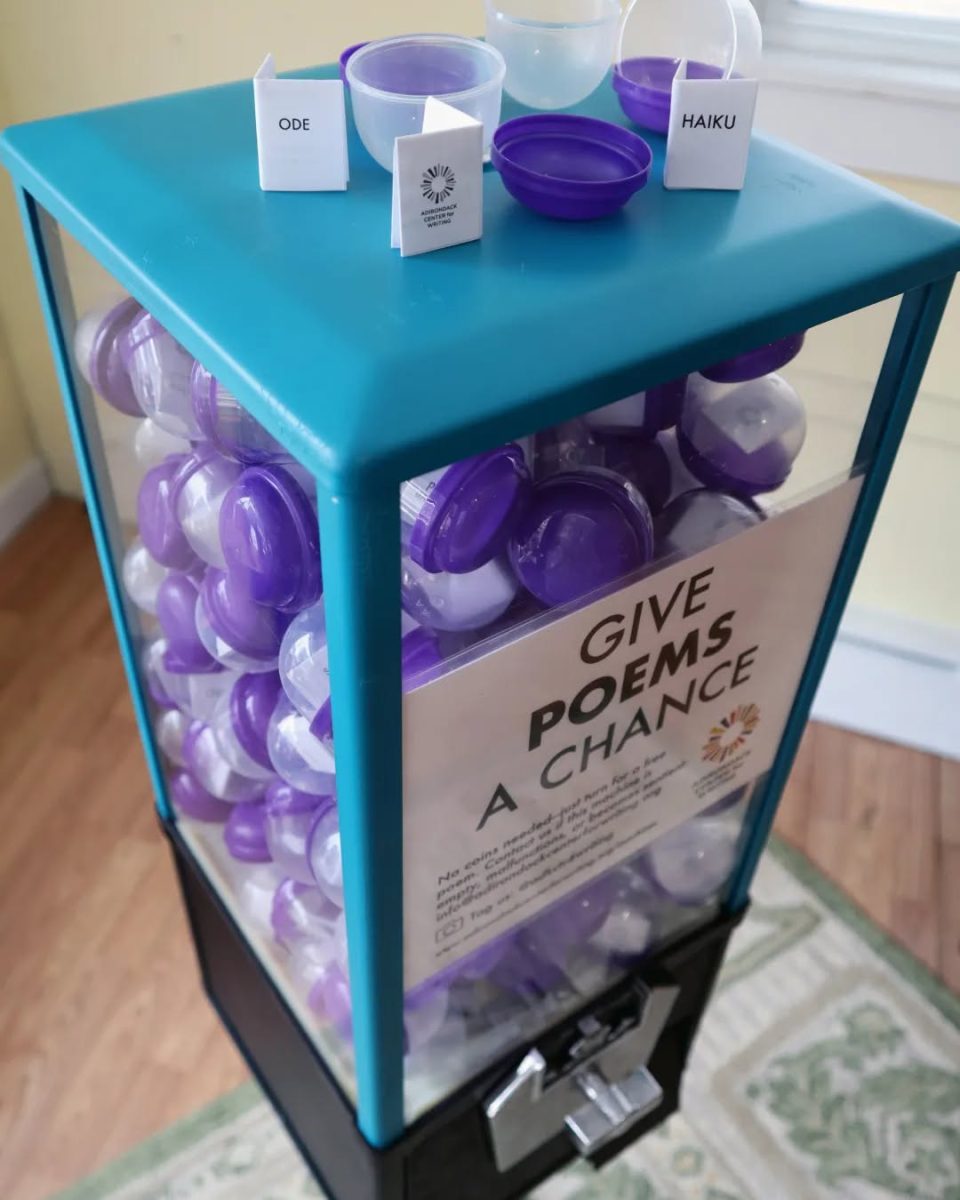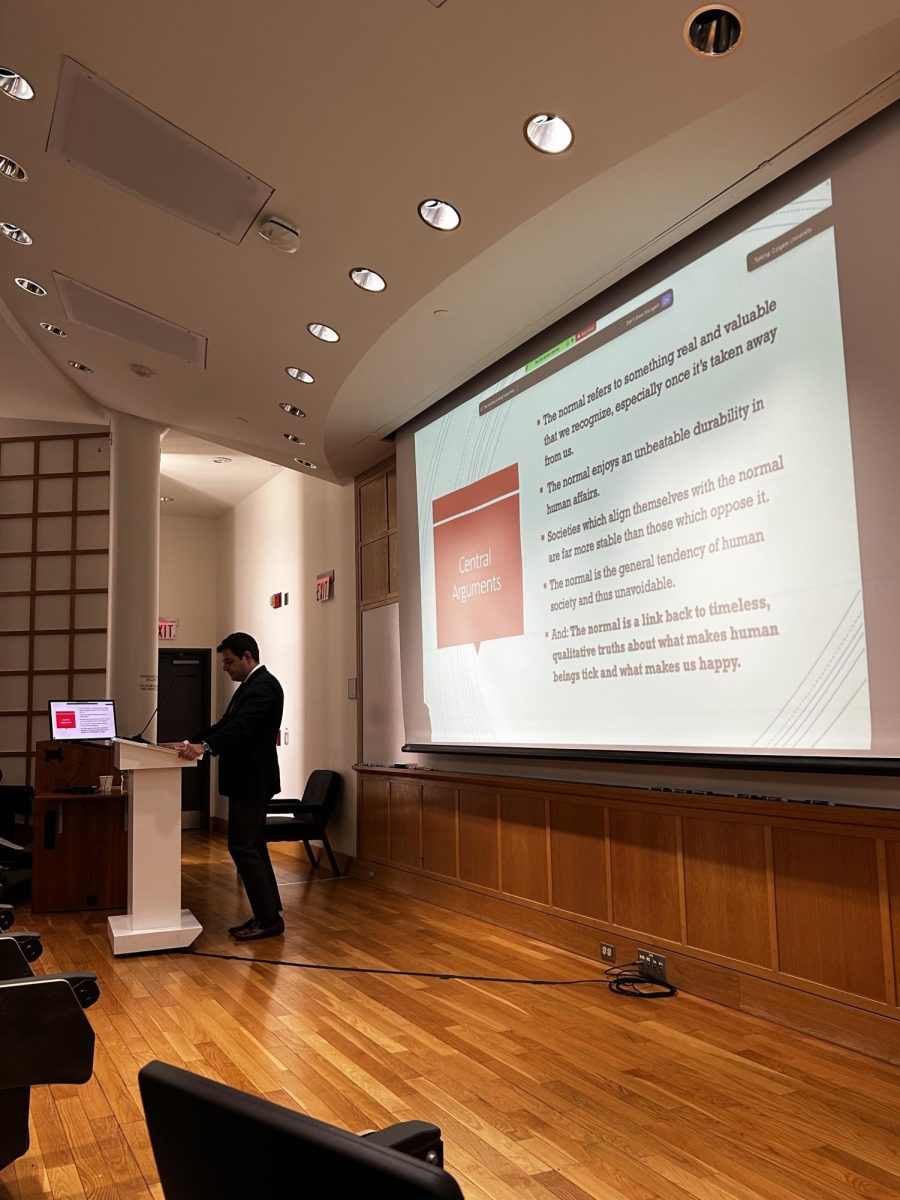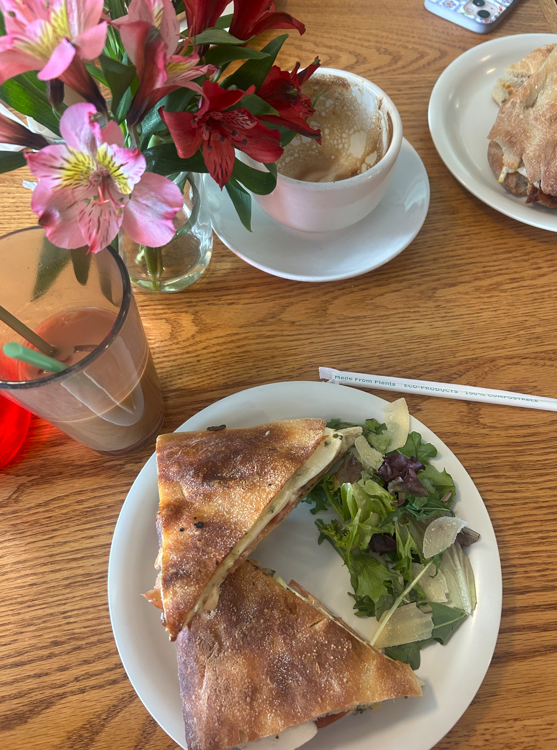On Wednesday, Oct. 2, the Art Department hosted Professor Emerita of art and art history Mary Ann Calo, who spent 25 years at Colgate and is a leader in the arts field, in addition to being an author of multiple books.
Calo’s decades of experience at Colgate led her to serve as the Art and Art History Department Chair, Associate Dean of the Faculty and Director of the Division of Arts and Humanities. She is also the recent author of “African American Artists and the New Deal Art Programs.”
Calo’s speech covered an overview of art history, beginning in the 1920s. Calo opened with a discussion of the New Deal, stating that it served as a time of major societal change. She said that New Deal Art History refers to the study of art produced during the New Deal period in the United States, specifically during the 1930s. This period was an activist era and saw a significant amount of art production, particularly in the form of murals and public art, as part of the government’s efforts to provide relief and support to artists during the Great Depression.
Calo added that one of the largest forces in stabilizing jobs in the arts field came from the Works Progress Administration (WPA), which helped rebuild employment after the Great Depression. Within the WPA, the Federal Art Project (FAP) focused on employing artists.
“WPA is a gigantic organization that put everyone in America to work. I mean, it was not just for artists. The art portion of it was minuscule,” Calo said.
The idea behind the program was that people should work for the common good of society; in particular, artists should be employed by the government to produce art that the general public could view and use to decorate public buildings. There were several positions for artists offered by the WPA, including creating murals, photography and designing publicly displayed pieces, in addition to coveted studio roles.
“The highest level of employment, the most sought-after assignment was to get one of these gigs where you just went to the studio and made a painting and you gave it to the government,” Calo said. “It was a very competitive position.”
Calo transitioned to discussing key pieces from the Great Depression era, beginning with Migrant Mother, a photograph depicting a migrant mother and her children during the Dust Bowl era. The picture shows a family with dirt caked on their clothes, wearing torn and thin pieces of fabric. The photographer, Dorothea Lange, was one of the artists who received a grant from the federal government. Calo explained that this was a groundbreaking program, far different from what artists had been used to at the time.
“I want to reiterate here again how revolutionary this idea is,” Calo said. “You know, you’re all living in a world now where there are a lot of ways for artists to get support for their work; there are grants you can apply for, their fellowships, their residencies. But you have to realize that before this time, it was absolutely unheard of that the federal government subsidized artists. This idea that artists have the right to live, that they have the right to make a living, was an incredibly revolutionary idea.”
Calo went on to discuss a variety of other artworks, including famous prints by photographer Walker Evans, which depict families, farmers and poverty in rural settings. She also shared more abstract imagery, including a painting by Philip Evergood that depicts a confrontation between labor organizers and policemen. Calo added that this piece is reflective of social conflict in the 1930s.
“This is a period when there’s a lot of emphasis on identity politics in the art world,” Calo said. “The artists from the cities much more strongly identified with labor unions and with the left, thinking they were politically progressive.”
Attendees of Calo’s presentation, including first-year Graicen Van Blarcom-DeLuise, appreciated how Calo explained the WPA in a way that provided new insight and challenged their pre-existing beliefs on the topic.
“The presentation challenged what I knew about the WPA,” Van Blarcom-DeLuise said. “Although the program gave the same chances to artists of color, those opportunities were not equal. Nonetheless, these artists created remarkable pieces despite the disadvantages they faced, which would inspire generations to come.”
Another member of the audience, first-year Anna Diemer, enjoyed the art that Calo shared.
“The pieces Calo presented were incredibly interesting, and I found myself drawn in by the uniqueness of the abstract paintings,” Diemer said. “The talk taught me much about art and its connection to the age of the Great Depression.”



